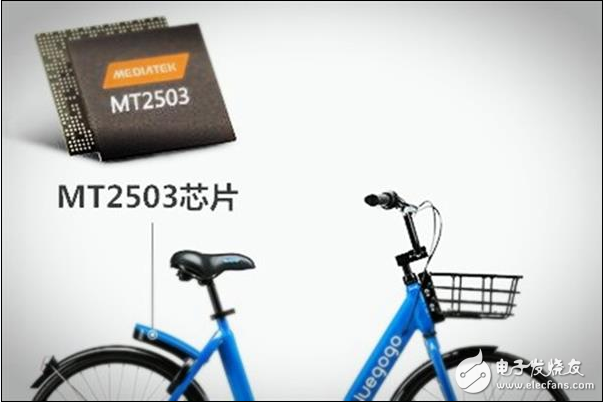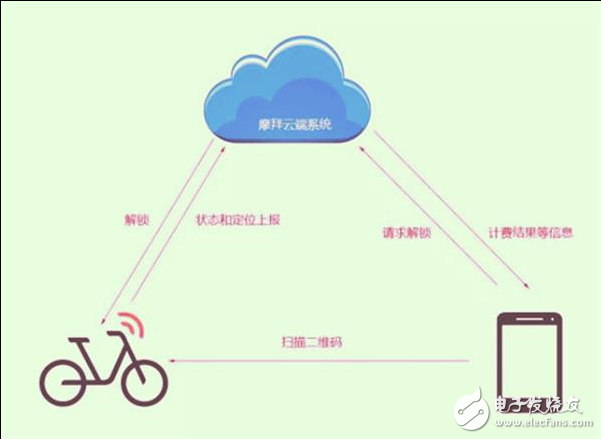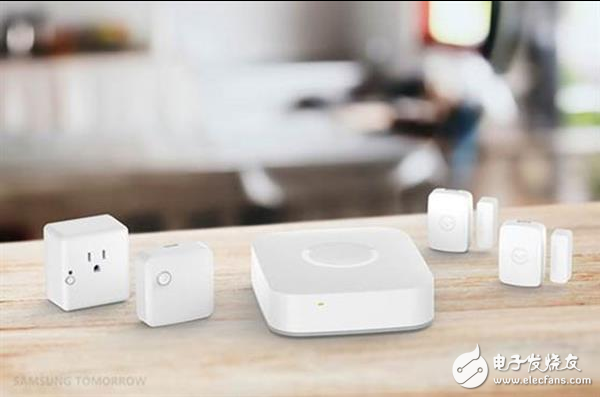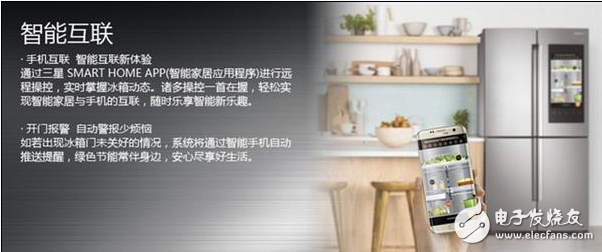Most people don't know that there is a CPU in the shared bike.
The weather is hot and the shared bicycles are getting hotter and hotter. The careful netizens will find that more and more shared bicycles on the street have been replaced by mechanical locks into electronic locks. You can not only find the specific location of each bicycle nearby. It is also possible to unlock by connecting the mobile phone to the bicycle. For more than 100 years since the birth of the bicycle, for the first time, because of the large-scale development of shared bicycles, 90% of people do not know. Like the smart phones, the shared bicycles of the fire also have a CPU that uses intelligent attributes. "The small blue car Bluegogo has a Unicom MT2503 chip built in every small blue bicycle. The position information of the bicycle can be positioned, transmitted and transmitted through the MT2503." MediaTek official said. The MT2503 is a chip designed by MediaTek for wearable devices at the end of 2015. It is a highly integrated and compact system-in-package IoT chip with a single core design and a frequency of 260 MHz. Support Bluetooth 3.0, integrated 2G modem. Its main feature is to support GPS and Beidou multi-satellite positioning system with Global Navigation Satellite System (GNSS). Bluegogo built-in MT2503 chip (Source: Weifeng) "Beidou, GPS, GLONASS and other multi-galactic positioning support makes the MT2503 positioning no dead ends, fast and accurate." MediaTek officially evaluated the MT2503. In this regard, MediaTek has done a good job. “Whether it is difficult to transmit between buildings, or in the corners of the hutongs, the small blue bicycles with MT2503 chip support can be easily locked. With multi-satellite transmission and positioning information, MT2503 allows every small blue bicycle to be used. Found." This is the convenience of the Internet of Things. MT2503 official introduction (Source: MediaTek official micro) In fact, MediaTek has already been eyeing the shared bicycle market. More than Bluegogo, Moby and ofo use MediaTek's solution. The chip is MTK. Moby uses the MT6261 chip, but it does not integrate GPS. Moby and ofo finally encapsulate other communication modules. After the next generation ofo upgrades the "Beidou Smart Lock", MTK chips will still be used. The IoT chips developed in this industry clearly have a broad market. And the future of the Internet of Things field not only shares the market of bicycles. Perhaps it is still a fog for friends who don’t know about the Internet of Things. How is the Internet of Things implemented? In fact, this is not a complicated process. Take the shared bicycle, the Internet of Things system consists of three parts: mobile, cloud, and bicycle. Shared bicycle IoT application architecture (Source: Baidu Pictures) The user can find nearby bicycles through the shared bicycle app on the mobile phone, and can perform recharge, reservation, unlock, and billing functions, which is the user control port of the Internet of Things system. The cloud is the control computing platform of the whole system. It communicates with all bicycles, collects information and orders, provides services for managers and mobile APPs, and responds to user and administrator operations to send commands to the bicycle terminals for control. The bicycle end is the end of collecting data and executing cloud commands. The functions include satellite positioning, remote unlocking and so on. The electronic lock integrates a SIM card with a separate number to maintain communication capability with the cloud (GPRS data transmission function), and can timely report the location of the vehicle (GPS positioning information) and the state of the vehicle electronic lock (locked state or use state). The cloud. Shared bicycles use the more common IoT application architecture: cloud-tube-end. Although not all Internet of Things are such specific lines, the Internet of Things devices currently used by consumers are basically controlled by such systems, and basically user control is implemented by mobile phones or computers. The Internet of Things has now received widespread attention from major vendors. Take the chip manufacturers, in addition to the MediaTek just mentioned, Qualcomm has also conducted a more in-depth exploration in the field of Internet of Things. In Qualcomm's official website, even a large page of the page was specifically elaborated on the Internet of Things. Going to smart city health care, down to smart home wearable devices, Qualcomm has never explored. Qualcomm is particularly prominent in smart cars. Qualcomm has introduced the Snapdragon 820A, a smart car chipset that provides advanced navigation assistance systems (ADAS) for car navigation and assists in the adoption of Qualcomm Automotive Application Processors (APs). Audi, BMW and other customers develop automatic driving functions. “In the past decade, most of us have considered the connection of the car itself, and in the next decade, we may have to think more about the seamless connection between the car and the surrounding environment.†It is not behind in this respect. As a leader in computing innovation, Intel is committed to driving cloud computing and hundreds of millions of smart, connected computing devices, and leveraging the end-to-end benefits of physical and cloud and ecological collaboration to drive the connectivity, intelligence, and autonomy of the Internet of Things. Promote the integration of various industries and the Internet of Things. In short, Intel has a clear advantage in cloud computing. In 2015, Intel launched the open integrated chipset Curie, hoping to accelerate the development of the commercial IoT market and attract more partners. Curie enables IoT developers to use a variety of devices, such as wearable devices and game consoles, with information processing, memory and communication chips, and a 6-axis integrated sensor. Intel supplied the Curie chipset for less than $10 and offered $1 million in prizes through the American competition show America's Greatest Makers, which attracted contestants to create wearable or smart devices using Curie. Intel introduced a Responsive Retail Platform (RRP), an Internet of Things that tracks real-time data related to shoppers and inventory. On January 16 this year, Intel announced that RRP will efficiently integrate multiple sensors in order to be used in the retail environment in the future. This new tracking device will also incorporate cloud technology, which will allow physical retailers to achieve the same level of computing power as online retailers. Samsung is also catching up on the road of the Internet of Things. Following the development of the new IoT chip last year, Samsung Group President and Chief Strategy Officer Young Sohn announced that it will invest $1.2 billion in the US Internet of Things market. Last May, Samsung Group released the Artik chip for Internet of Things, designed for low-power IoT devices. Artik brings together software, drivers, security, cloud connectivity, development boards and IoT modules to accelerate The development of global IoT devices, services and solutions. In order to expand the range of chip applications, Samsung has introduced Artik 1, a small high-end device for cameras or smart watches, which can be used for ultra-small low-power devices such as door locks, smart lamps and fire detectors. Artik 5 for the device, and Artik 10 for large composite devices such as smart TVs and drones. Samsung SmartThings smart home accessories (Source: Baidu pictures) In recent years, Samsung has been continuously promoting the development of the Internet of Things. Samsung said last year that all goods sold after 2020 will be IoT devices. At the first "Internet of Things - Transformation and Future" conference, Samsung promoted the benefits of the Internet of Things it invested in to many commercial companies, as well as academia and even the political world. Young Sohn believes that the US government should become a customer of its IoT business. Having said that, I believe that everyone will definitely have a question. Why do chip giants turn their attention to the Internet of Things? In fact, answering this question is not difficult. Broadly speaking, human society is gradually entering the stage of informationization (or service industry). In his book The Third Wave, Toffler divides the development of human society into three phases: the first wave is the agricultural phase, starting from about 10,000 years ago; the second phase is the industrial phase, from 17 The end of the century; the third stage is the informatization (or service industry) stage, which began in the late 1950s. Although Toffler did not bring us direct wealth, his thoughts have guided the direction of “creating the futureâ€. Alvin Toffler, author of The Third Wave (Source: Baidu Pictures) The Internet of Things we are talking about here is widely used in the convergence of networks through communication-aware technologies such as intelligent sensing, recognition technology and pervasive computing. It is also called the third development of the world information industry after computers and the Internet. wave. Undoubtedly, this will be a development trend for a long time in the future, and those who seize the opportunity will obviously have the qualification to lead the trend. Of course, the advancement of the third wave is based on the level of technology. The current level of technology has been able to meet the initial development of the Internet of Things. From the network to which the Internet of Things is attached, NB-IoT (narrowband Internet of Things) is now fully accelerated, and 5G operator planning is gradually becoming clear. At present, IoT access devices are mostly wearable smart hardware, industrial sensors, monitoring meters, etc. These devices are small in size and battery-powered. The demand for information transmission is limited. Narrow-band Internet of Things such as NB-IoT is at the beginning of design. In order to reduce system complexity and power consumption costs, and to improve equipment life, only a sufficient rate (1Mpbs is sufficient) is guaranteed, which is precisely the technical standard of the current Cat.13 that pursues high speed and high system complexity. On the contrary; when performing more complex tasks like unmanned driving, medical care and rescue, the real-time and reliability requirements of the Internet of Things become extremely high, and 5G can better meet such needs. Once the 5G network is applied, the concepts of car networking, smart city, and drone network that still have great envisioned space will be further developed. After the trend and technology, consumer recognition is the biggest driving force for manufacturers to develop the Internet of Things. In recent years, the development of smart home has become an extremely hot topic, and smart cars are also evolving with the development of technology. These reasons can be recognized by consumers because the Internet of Things does bring great convenience to users' lives. For example, the surveillance camera of the Internet of Things can remotely transmit images to users and warn users when conditions arise; smart refrigerators can use the Internet of Things to allow users to remotely see what is still in the refrigerator. It is not necessary to open the refrigerator to check the inventory before going out for big purchases. Smart refrigerator (Source: Suning) The smart home in the future is not limited to the interconnection of two or two, but the interconnection of the entire smart home system. Through system interconnection, multi-end coordination can be realized, and users can control the smart home system at any time through the local area network or the Internet to realize the real home system. Intelligent. Furthermore, the development of smart cities in the future will bring more scientific management methods and more convenient life services to human society, and further promote the sustainable development of human society. This will bring a wide to almost limitless market for the development of IoT vendors. With a mobile phone, you can control all the furniture. After going out, we can sit on the driverless car. When we go to the supermarket, we will find more IoT devices to replace the manual sales, and we can use the Internet of Things. More comprehensive medical monitoring, etc., these scenes that only existed in science fiction movies will gradually become reality through the development of the Internet of Things, which is undoubtedly worthy of expectation from each of us. Of course, this is also the best answer to explain why the big picture of the chip will be eyeing the Internet of Things.
USB Cable Charger
Usb 3.1 Type-C Cable,Usb Cable,Usb Cable Cord,Usb Cable Charger CHANGZHOU LESEN ELECTRONICS TECHNOLOGY CO.,LTD , https://www.china-lesencable.com




